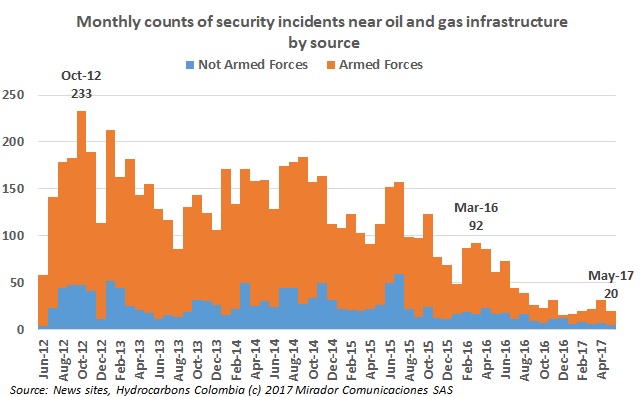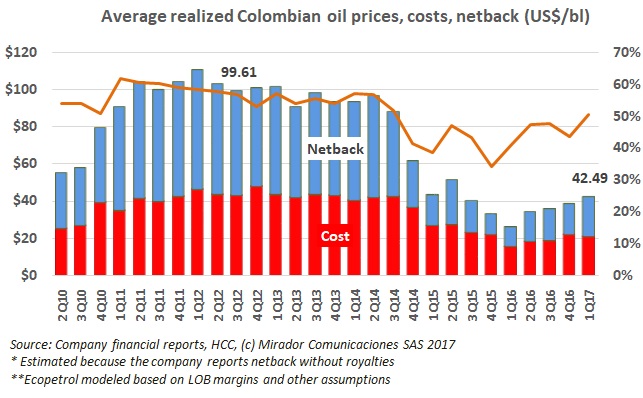Now Part 2 of our ongoing series written by Leopoldo Olavarría and the team at Norton Rose Fulbright on Agreement 2, the National Hydrocarbons Agency’s (ANH) rewrite of the rules for block assignment and contracting.

Colombia’s General Controller (GC) recently told the press that the country will lose its self-sufficiency in oil by 2023.
No, we are not shifting Hydrocarbons Colombia into mining. Yes, we already wrote about Cajamaraca. But this unfortunate decision sets difficult precedents for the oil and gas industry.

Our counts of security incidents near oil and gas infrastructure dropped again this past month, plumbing new lows since we started keeping statistics in 2012.
Last October, Leopoldo Olavarría and the team at Norton Rose Fulbright offered to write a series of articles on the draft of Agreement 2 that was circulating at that time.
In our second look at Argentina’s oil and gas industry, we examine how a dependency on natural gas has led to a fiscal crisis, and how the potential for shale resources could alleviate this problem and make the country and exporter of hydrocarbons once again.

This week’s article on the Argentine oil and gas industry is devoted to unconventional resources, which, in Argentina’s case mostly means gas.
Late Thursday – after our closing of course – MinMinas published reserves for 2016 and announced that the long-awaited Agreement 2 had been signed.

OK. Maybe ‘smiling’ is too much to ask of a CFO; scowling and grimacing less perhaps. Prices are up; costs are stable; netback is up. What more could a CFO ask for? OK. Maybe even higher prices. More on that later.
Flights to Buenos Aires are busier lately and the reasons have little to do with soccer, tango or media-lunas. So our readers can understand this phenomenon better, we have a two overview articles.